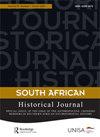彼得鲁斯公园的空间生产:公共空间作为透视约翰内斯堡不断变化的公共文化的镜头,1968-2019
IF 1
3区 历史学
Q1 HISTORY
引用次数: 2
摘要
摘要约翰内斯堡和南非的历史以及殖民、种族隔离和向民主的复杂过渡的偶然性,塑造了Pieter Roos公园的不同迭代。我认为,公园的动态和偶然性反过来也在塑造同样的历史中发挥了作用。利用公共空间作为历史的镜头,揭示了不同公众的形成及其由此产生的冲突是如何产生一种植根于约翰内斯堡的公共竞争文化的。这些动态在Pieter Roos公园中得到了折射和反映,公园的开发、管理和使用促进了城市公共文化的变化。列斐伏尔的空间三位一体有助于揭示不同的驱动因素、动机和过程如何相互作用以产生空间,在公共空间和空间正义之间的相互作用中突破了不同层次的复杂性和时间性。本文主要基于档案研究和采访,展示了塑造彼得罗斯公园空间生产的历史争论如何展示其公共性和空间正义的转变潜力。这让我们对种族隔离和向民主过渡期间塑造公共空间和公共文化的紧张局势和对立情绪的微观现实有了新的认识。本文章由计算机程序翻译,如有差异,请以英文原文为准。
The Production of Space at Pieter Roos Park: Public Space as a Lens into Johannesburg’s Changing Public Culture 1968–2019
ABSTRACT Johannesburg and South Africa’s history and contingencies of colonisation, apartheid and a complex transition to democracy shaped different iterations of Pieter Roos Park. I argue that the dynamics and contingencies of the park in turn played a role in shaping those same histories. Using public space as a lens into history is revealing of how the formation of different publics and their resultant conflicts have produced a public culture of contestation that is embedded in Johannesburg. These dynamics were refracted and reflected in Pieter Roos Park, the development, management and use of which contributed to the changing public culture of the city. Lefebvre’s spatial triad helps reveal how different drivers, motivations and processes interact to produce space, cutting through different levels of complexity and temporality in the interactions between public space and spatial (in)justice. Based primarily on archival research and interviews, this article shows how historical contestations that shaped the production of space at Pieter Roos Park demonstrate its shifting potential for publicness and spatial justice. This offers new insight into the micro-level realities of tensions and opposing sentiments that shaped public space and public culture during apartheid and the transition to democracy.
求助全文
通过发布文献求助,成功后即可免费获取论文全文。
去求助
来源期刊

South African Historical Journal
Multiple-
CiteScore
0.70
自引率
0.00%
发文量
37
期刊介绍:
Over the past 40 years, the South African Historical Journal has become renowned and internationally regarded as a premier history journal published in South Africa, promoting significant historical scholarship on the country as well as the southern African region. The journal, which is linked to the Southern African Historical Society, has provided a high-quality medium for original thinking about South African history and has thus shaped - and continues to contribute towards defining - the historiography of the region.
 求助内容:
求助内容: 应助结果提醒方式:
应助结果提醒方式:


